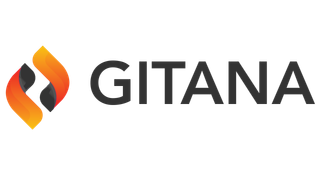Found 508 results for "gitana 3.2 guide guide api datatypes repository"
The search executed in 0.0022 seconds. That's fast.

|
Gitana 3.2 / Guide / Guide / Deployment / Deployment Handlers / HTTP Deployment HandlerDocumentation Reference Deploy packages efficiently to custom HTTP endpoints with basic authentication, ideal for database integration and content management. (Gitana 3.2)
Score: 2.0934
|

|
Gitana 4.0 / Content Engine / Deployment / Deployment Handlers / HTTP Deployment HandlerDocumentation Reference Deploy packages efficiently to custom HTTP endpoints for integration with databases, CDNs, and CMS systems. (Gitana 4.0)
Score: 2.0934
|

|
Gitana 3.2 / Guide / Guide / Command Line / Transfer CommandsDocumentation Reference Effortlessly migrate content with Cloud CMS CLI. Export, import, and manage archives for seamless data deployment. (Gitana 3.2)
Score: 2.068
|

|
Gitana 4.0 / Developers / Command Line Interface / Transfer CommandsDocumentation Reference Efficiently manage Cloud CMS content with our CLI tool for seamless import/export and deployment tasks. (Gitana 4.0)
Score: 2.068
|

|
Gitana 3.2 / Guide / Guide / Bulk Import / NodesDocumentation Reference Streamline content import with Cloud CMS Bulk Import tool for easy handling of articles and authors data. (Gitana 3.2)
Score: 2.032
|

|
Gitana 4.0 / Content Engine / Bulk Import / NodesDocumentation Reference Optimize content import with Cloud CMS Bulk Import tool and Packager API for structured data files. (Gitana 4.0)
Score: 2.032
|

|
Gitana 4.0 / Developers / Drivers / JavaScript / NodeDocumentation Reference Connect your Node.js apps to Gitana with our JavaScript 2.0 driver, featuring ECMAScript promises for seamless integration. (Gitana 4.0)
Score: 2.0186
|

|
Gitana 3.2 / Guide / Guide / Bulk Import / JSONDocumentation Reference Easily import JSON content to Cloud CMS with the Bulk Import tool for seamless data integration and management. (Gitana 3.2)
Score: 2.003
|

|
Gitana 4.0 / Content Engine / Bulk Import / JSONDocumentation Reference Seamlessly import JSON content into Cloud CMS using our intuitive bulk import tool for efficient data management. (Gitana 4.0)
Score: 2.003
|

|
Gitana 3.2 / Guide / Guide / Docker / UI ExtensionsDocumentation Reference Enhance Docker-based Cloud CMS UI with extensions, environment variables, and custom service integrations. (Gitana 3.2)
Score: 2.0003
|

|
Gitana 4.0 / Self Managed / UI ExtensionsDocumentation Reference Optimize your Cloud CMS user interface by leveraging Docker-based extensions for customizable application enhancements. (Gitana 4.0)
Score: 2.0003
|

|
Gitana 4.0 / Reference / Types / NodeDocumentation Reference Explore the structured representation of nodes and associations in a repository. Enhance content management skills with interactive APIs. (Gitana 4.0)
Score: 1.9961
|

|
Gitana 4.0 / Reference / Types / BranchDocumentation Reference Manage content with Branch: create, isolate, share projects, and track changes seamlessly. (Gitana 4.0)
Score: 1.9825
|

|
Gitana 4.0 / Reference / Types / ReleaseDocumentation Reference Explore our comprehensive guide on managing repository releases, featuring methods for creating, updating, and managing releases efficiently. (Gitana 4.0)
Score: 1.9624
|

|
Gitana 4.0 / Reference / Types / Merge ConflictDocumentation Reference Explore our API documentation for resolving merge conflicts in repositories, with detailed methods and properties. (Gitana 4.0)
Score: 1.9518
|

|
Gitana 4.0 / Reference / Types / Pull RequestDocumentation Reference Comprehensive guide on pull requests, properties, methods, and repository integration. Learn to create, update, and manage pull requests. (Gitana 4.0)
Score: 1.9282
|

|
Gitana 3.2 / Guide / Guide / Docker / Maintenance / Datastore DeletionDocumentation Reference Learn how to manually remove MongoDB databases after deleting Cloud CMS datastores, ensuring backup policies. (Gitana 3.2)
Score: 1.9241
|

|
Gitana 4.0 / Reference / Types / Branch GroupDocumentation Reference Explore the Branch Group API for managing repositories within a platform, featuring methods and properties. (Gitana 4.0)
Score: 1.92
|

|
Gitana 4.0 / Reference / Types / WorkspaceDocumentation Reference Explore the comprehensive Gitana workspace API: documentation, methods, properties, and examples for seamless integration. (Gitana 4.0)
Score: 1.9159
|

|
Programmatically create content in a folder?Support Article Effortlessly create content in folders with Cloud CMS using customizable JSON structures and special properties. (Support 1.0)
Score: 1.913
|

|
Gitana 3.2 / Guide / Guide / API / Data Types / BranchDocumentation Reference Create isolated workspaces with branches; collaborate, freeze, or set read-only. Manage changesets and properties with ease. (Gitana 3.2)
Score: 1.9053
|

|
Gitana 3.2 / Guide / Guide / Authentication / OAuth 2.0Documentation Reference Securely integrate OAuth2 with Cloud CMS for your apps, featuring top industry practices for robust authentication. (Gitana 3.2)
Score: 1.8978
|

|
Gitana 4.0 / Developers / Authentication / OAuth 2.0Documentation Reference Discover the power of OAuth 2.0 for secure server authorization with Cloud CMS. Simplify authentication for web and mobile apps. (Gitana 4.0)
Score: 1.8978
|

|
Gitana 4.0 / Content EngineDocumentation Reference Unlock content value with Gitana's high-performance platform, enabling quick, secure publishing to boost market engagement. (Gitana 4.0)
Score: 1.8948
|

|
Gitana 4.0 / Reference / Types / DiffDocumentation Reference Explore the Gitana Diff object in repositories, with properties, methods, and schema details. Access guides for various language drivers. (Gitana 4.0)
Score: 1.8732
|
